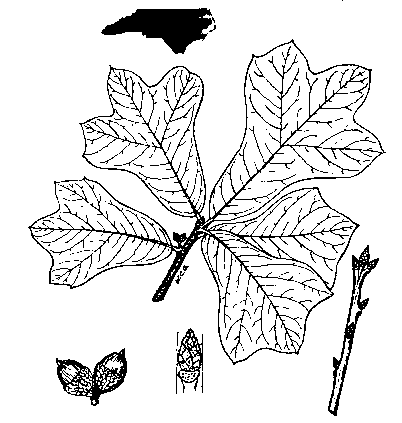|
Blackjack
Oak
(Quercus
marilandica Muench.)
|
|
| |
 |
|
| |
The
presence of blackjack oak is said to indicate poor soil. This
tree most commonly is found on poorly drained, heavy clay soils
or on dry gravel or sandy upland soils where few other forest
trees thrive. It is found in all parts of the state except the
high mountain regions.
Blackjack oak leaves are 4 to 8 inches long and leathery; the
underneath surfaces are brownish or orangish and are quite hairy.
The leaves have many shapes, but commonly are much broader at
the end than at the base, with three ill-defined large lobes at
the apex. They often are described as "bell-shaped. "
Its acorns are less than an inch long. They are oblong and about
half-covered by thick, scaly cups. Blackjack oak bark is rough,
very dark (often nearly black) and broken into small, hard rectangular
blocks. Small, stiff dead branches commonly are present.
These trees rarely grow larger than 20 to 30 feet tall. They are
scraggly and not very valuable as a timber species. The wood makes
excellent charcoal and is used commercially for this product.
|
|
|

